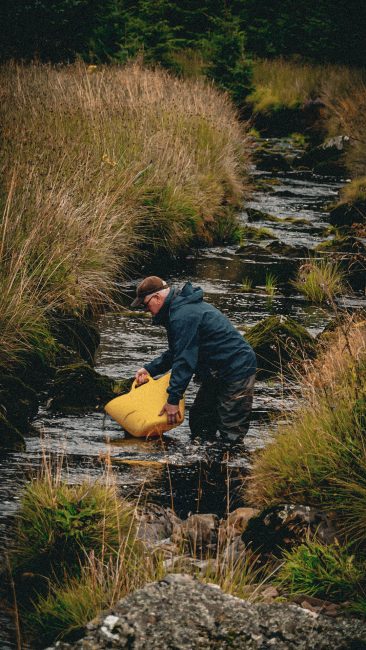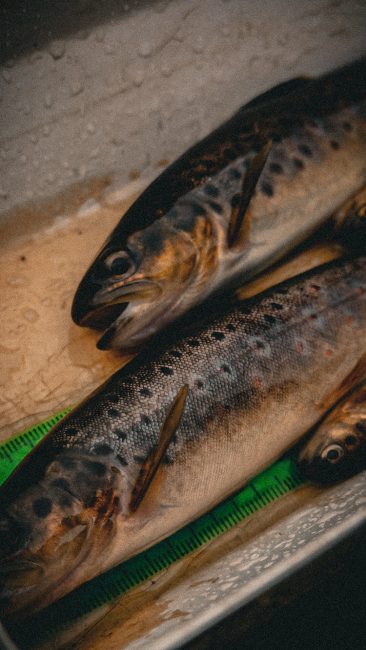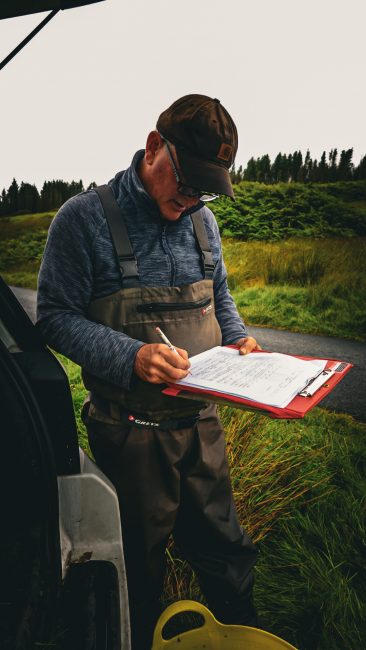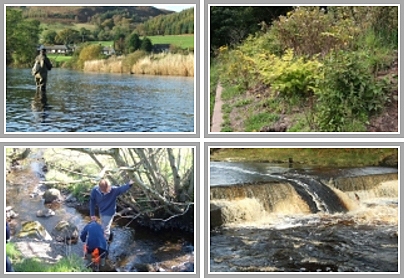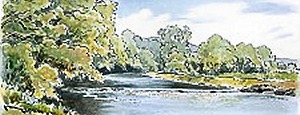This week we’ve been in the very upper reaches of tributaries that feed the upper Duisk in the Stinchar catchment. We always look forward to a trip down into the Stinchar Valley as it’s incredibly picturesque however this week we’ve been dodging incredibly heavy rain which kept life interesting and soggy! These surveys are to monitor the wind farms above Barrhill and despite some of these burns being above the natural range of salmon due to waterfalls these small burns have good populations of resident trout and eels that manage to negotiate the waterfalls and cascades that can prevent salmon reaching the very upper reaches.
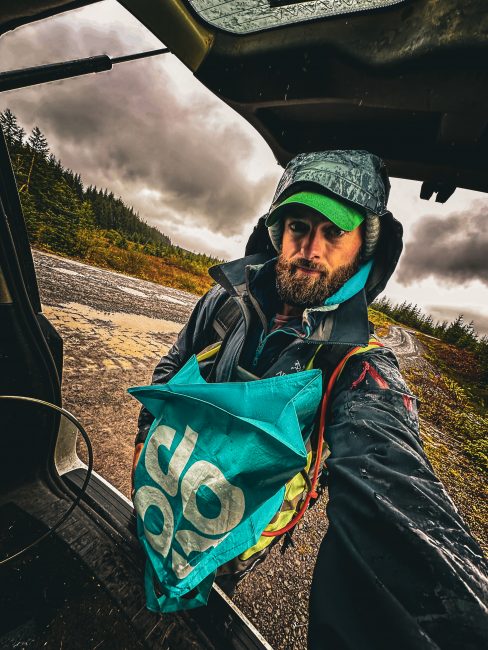
We had to resort to high tech means of protecting the equipment – a COOP bag with a few slits in the sides kept the expensive electronics from water ingress on a very wet morning.
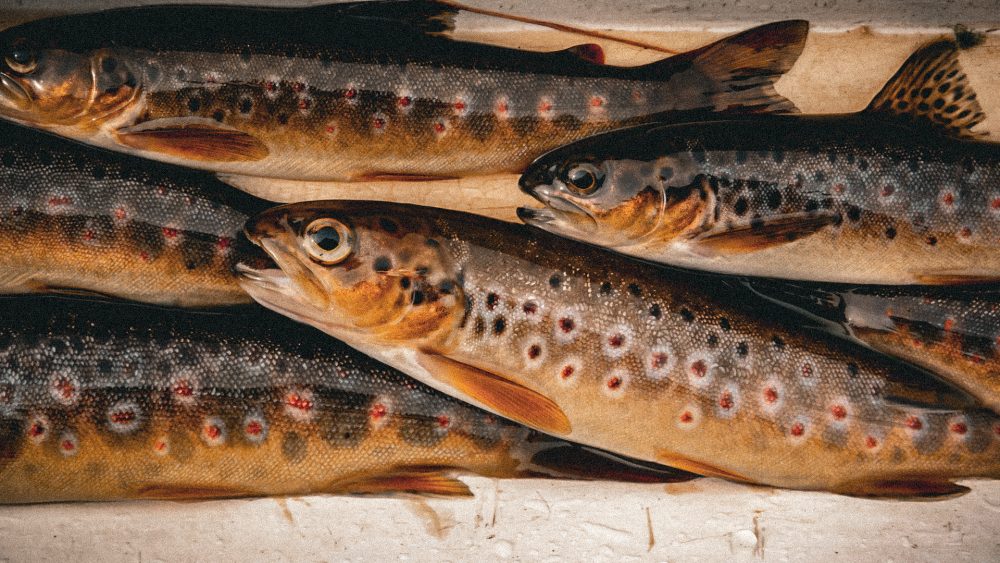
A healthy collection of trout parr from the Water of Tig – we also had encouraging numbers of fry too indicating that spawning and subsequent survival have been good this year. These upper catchments can be quite harsh environments with cooler water temperatures on average compared to lower altitude burns and less enrichment reducing the amount of growth that the fish can sustain over the year.
- Ian releases the catch at the top of the Water of Tig – salmon could potentially access this habitat but there are a number of falls and cascades to negotiate to achieve that feet.
- A handsome brace of trout from the Tig
- A rare moment when jackets could be dispensed with! Note however that Ian was sheltering under the boot-lid of the Freelander.
